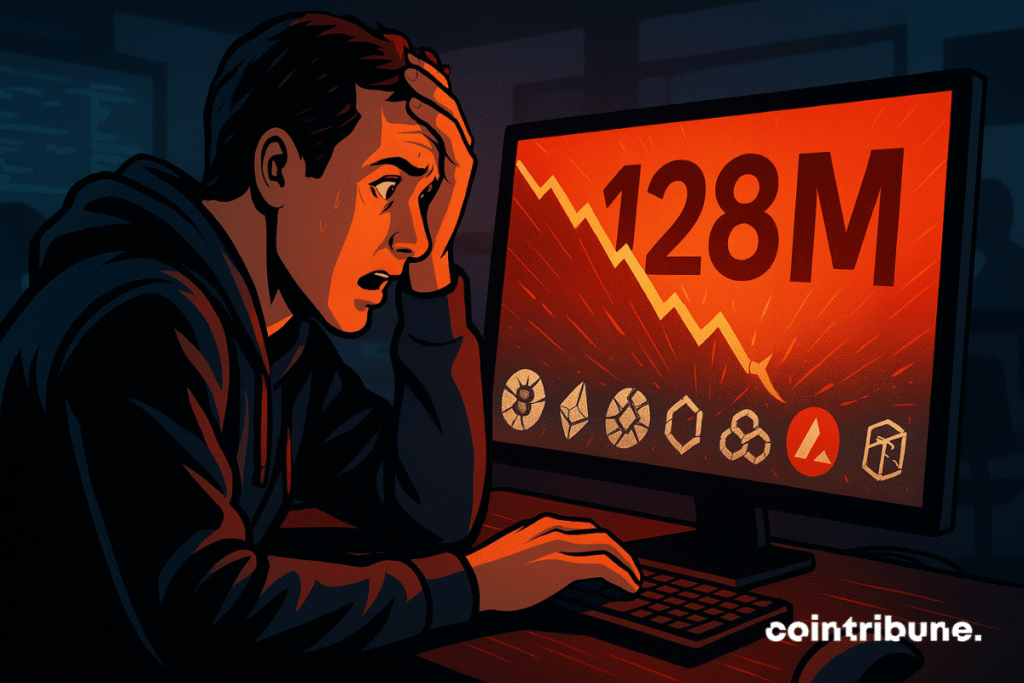Crypto: Balancer publishes a preliminary report on the hack that targeted it
Balancer has just published its preliminary report on the attack that shook the DeFi protocol on November 3. A technical flaw in the V2 pools allowed hackers to siphon 128 million dollars across seven different blockchains. But the real bill is much higher: the total value locked (TVL) collapsed by 58% in just two days. How could a protocol audited eleven times fall victim to such a debacle?

In brief
- Balancer lost 128 million dollars on November 3 due to a rounding error in its V2 pools.
- The protocol’s TVL collapsed by 58%, falling from 443 to 186 million dollars in two days.
- Seven blockchains were affected, including Ethereum which accounts for 99 million in losses.
- Ethical hacker teams have recovered 33 million dollars so far.
A microscopic flaw with devastating consequences
On November 3, 2025, Balancer joined the very exclusive club of DeFi protocols victim to massive hacks. The culprit? A simple rounding error nestled in the “composable stable V2 pools.”
This flaw gave attackers a wide open path to manipulate batch swaps and methodically drain liquidity.
Ethereum took the hardest hit with 99 million dollars stolen. Attackers then targeted Base, Polygon, Arbitrum, Optimism, Sonic, and Avalanche. Their method? Playing with batch swaps to falsify balance calculations and extract value before systems detected the anomaly.
Balancer’s reaction was swift. The team suspended the vulnerable pools minutes after detection. This intervention prevented the hemorrhage from worsening. The V3 pools remained fully intact, confirming the solidity of the protocol’s new infrastructure.
Recovery efforts are progressing. Ethical hackers have already repatriated 33 million dollars. Berachain conducted a hard fork and recovered 12.8 million, with reimbursements already underway.
StakeWise managed to save 20 million through its own operations. The protocol praised “the quick response that prevented a larger hemorrhage.” A full report will be published soon with recovery steps for affected users.
The collapse of trust costs more than the hack
TVL figures tell an even harsher story. Balancer’s total locked value literally collapsed. It dropped from 443 million dollars on November 3 to just 186 million today. A dizzying fall of 58% in forty-eight hours.
This plunge erases months of relative stability. Since January 2025, Balancer was already losing ground, its TVL having melted down over a billion. The hack simply accelerated this downward trend and scared off investors. The total loss now exceeds 257 million dollars when combining the theft and capital flight.
The BAL token plunged 6% before stabilizing. Traders quickly recognized the resilience of the protocol’s version 3. This price resistance, stronger than that of the TVL, shows a certain market confidence in Balancer’s ability to recover.
The protocol is now pushing for an aggressive migration towards V3. The team also warns against fraudulent messages exploiting post-hack confusion. Deeper audits and code updates are promised to prevent history from repeating itself.
This $128 million hack propels Balancer to second place on the unenviable podium of the biggest DeFi hacks of 2025. The ecosystem thus crosses the $2.2 billion annual loss mark.
A harsh reminder that DeFi, despite its promises of transparency and security, remains a minefield. Composability, this founding principle that allows protocols to stack like Lego bricks, here shows its downside: when one link breaks, the whole chain wavers.
Maximize your Cointribune experience with our "Read to Earn" program! For every article you read, earn points and access exclusive rewards. Sign up now and start earning benefits.
Passionné par le Bitcoin, j'aime explorer les méandres de la blockchain et des cryptos et je partage mes découvertes avec la communauté. Mon rêve est de vivre dans un monde où la vie privée et la liberté financière sont garanties pour tous, et je crois fermement que Bitcoin est l'outil qui peut rendre cela possible.
The views, thoughts, and opinions expressed in this article belong solely to the author, and should not be taken as investment advice. Do your own research before taking any investment decisions.